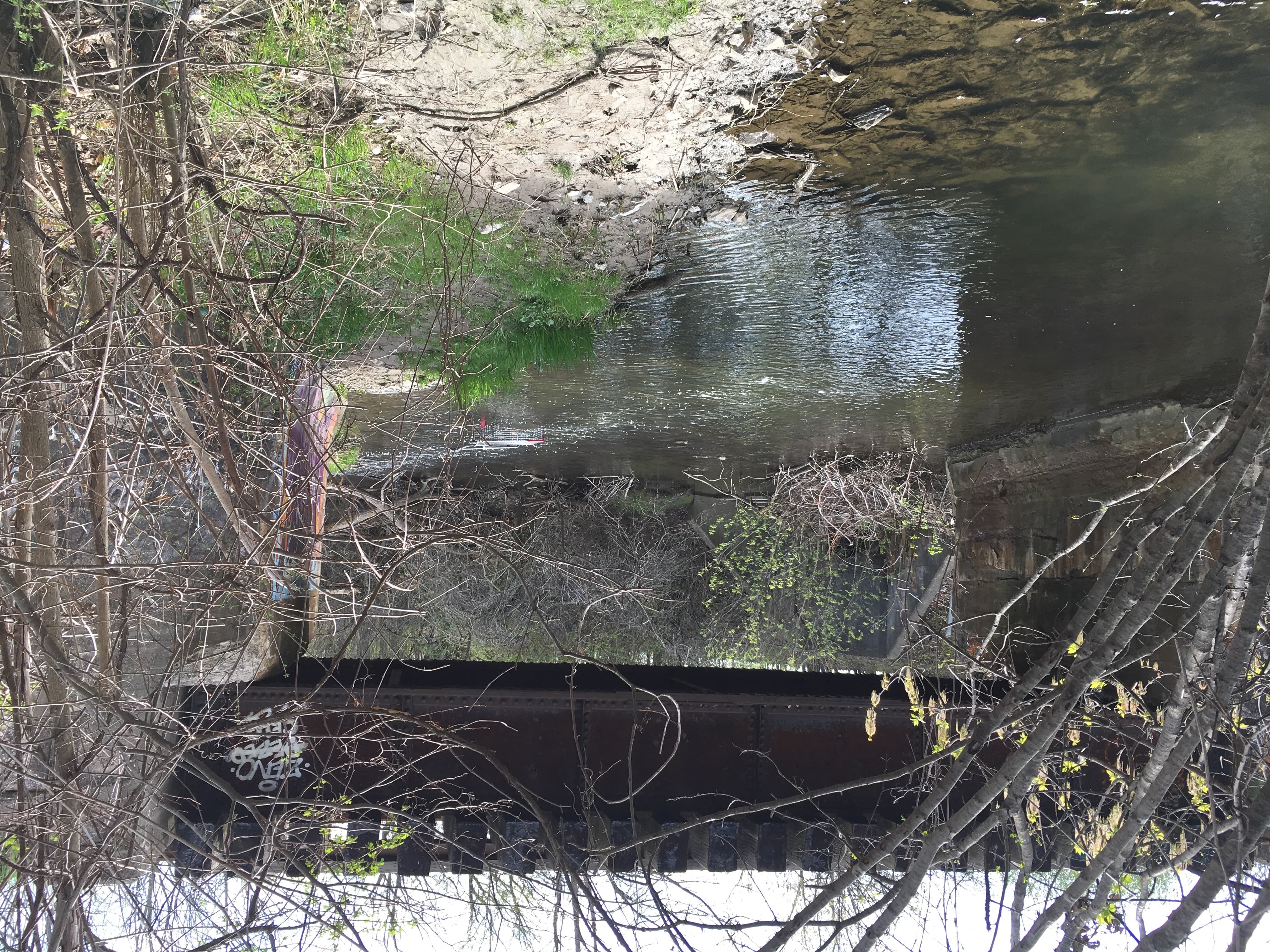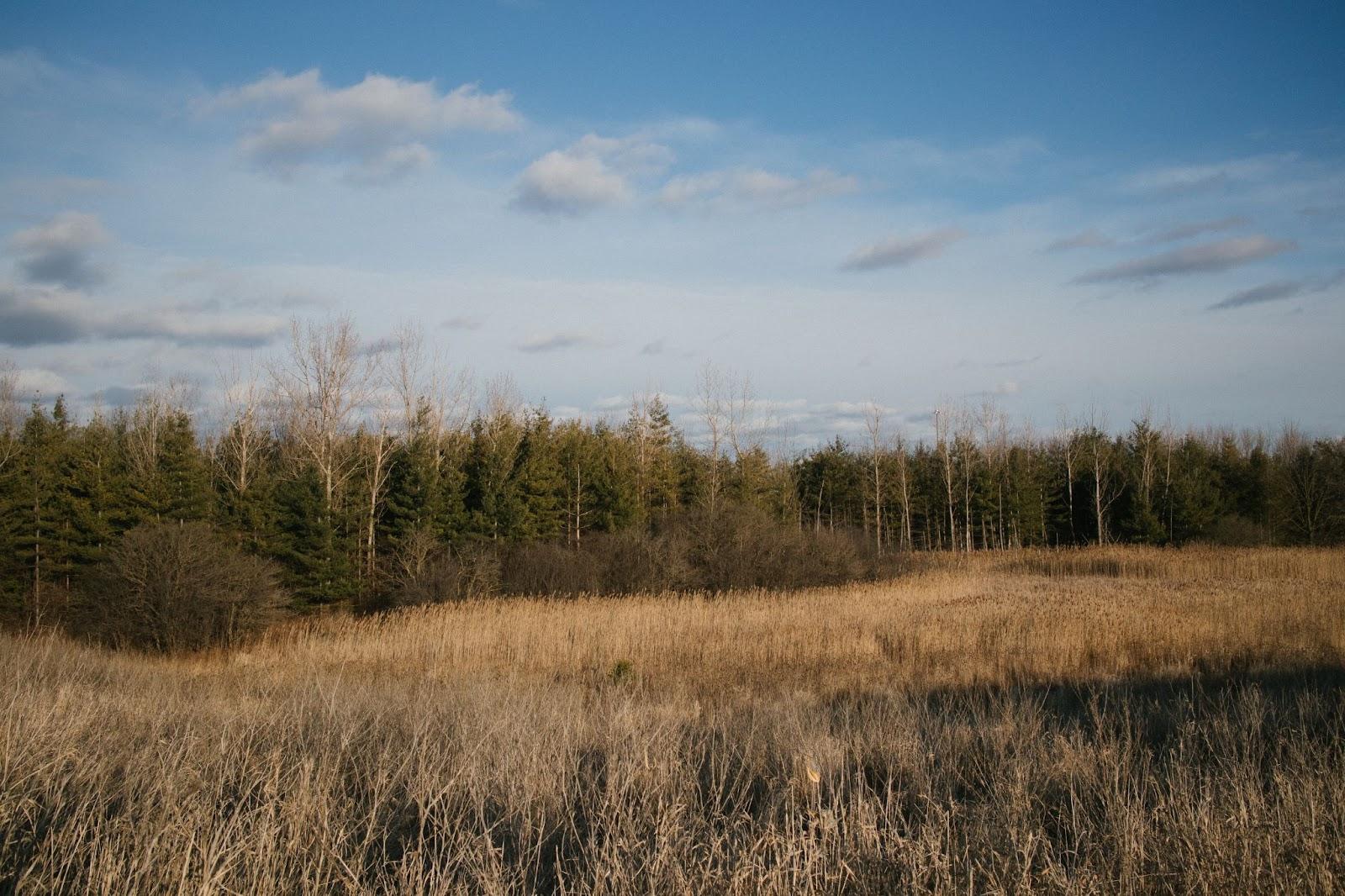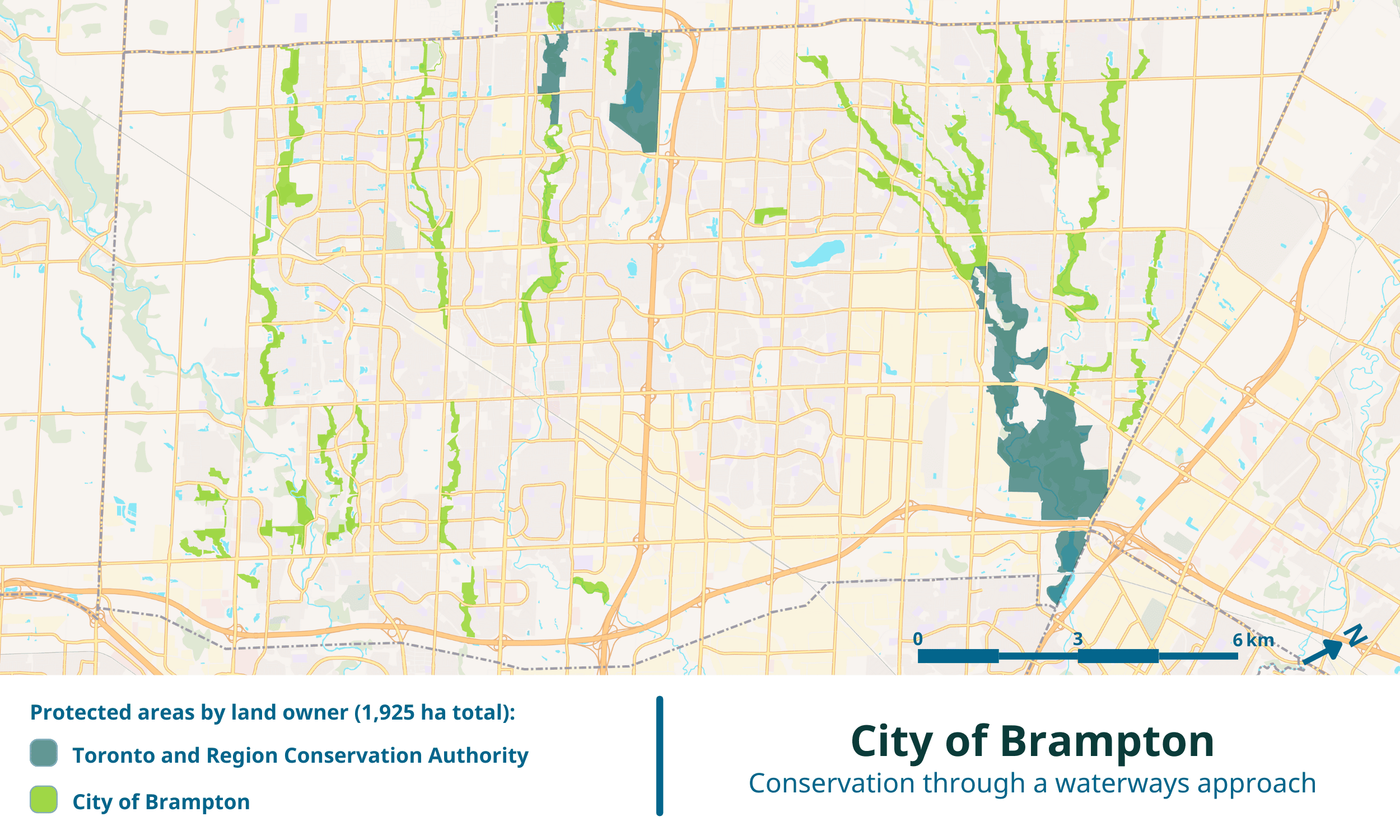Brampton, Ontario

Takeaways
With innovative leadership, strategic collaboration and community support, even Canada’s most rapidly growing municipalities can do their part to protect and conserve near-urban nature. Systems-based thinking and a strategic approach to land acquisition were key to Brampton’s success.
“Knowing that so much of our natural heritage system meets this high standard for conservation really validates all the effort our community puts into caring for our near-urban natural areas.”
— Karley Cianchino, Environmental Project Specialist with City of Brampton
A First in Ontario
The City of Brampton has taken a unique approach to contributing to the 30×30 target, based around the city's Natural Heritage System (NHS). A first in Ontario, Brampton's systems-based approach resulted in a contribution of 1,924 hectares of well-connected near-urban natural areas -- an impressive feat in one of Canada's fastest growing urban centres. It was only possible because the city, in partnership with the Toronto and Region Conservation Authority (TRCA), owns and manages so much of these lands for conservation.
Brampton has facilitated natural land acquisitions through a leading-edge official plan policy requiring developers to transfer natural features and areas to the city as a condition of approval for proposed development projects. Developers must also ensure the natural spaces are in an acceptable condition, free from adverse effects, prior to the transfer.
Many layers of municipal, conservation authority and provincial policy contributed to meeting the pan-Canadian standard for contributing to 30×30, including Brampton's extensive environmental plans and strategies (e.g., Grow Green Environmental Master Plan, Natural Heritage and Environmental Management Strategy Implementation Action Plan, Brampton EcoPark Strategy). These documents consistently emphasize the city's commitment to protecting, enhancing and improving connectivity among natural areas.
The city translates its policy commitments into conservation action through plans and programs emphasizing connectivity and climate change adaptation. These include the city's restoration and naturalization programs, Urban Forest Management Plan (2022) and TRCA's Invasive Species Management Strategy (2020), among others. Activities such as native species planting and invasive species removals represent a collective effort by the city, TRCA and community members to care for nature.
 Fletcher’s Creek in Brampton © G. Hendrik CC BY-NC-SA 2.0
Fletcher’s Creek in Brampton © G. Hendrik CC BY-NC-SA 2.0
Biodiversity and Ecosystem
Brampton contributed 1,924 hectares of natural areas within its NHS, all owned and managed by the city or TRCA. These sites encompass a range of natural features and areas including woodlands, rivers, valleylands, wetlands and ecological linkages. They contain several significant ecosystems such as provincially significant wetlands and the Heart Lake Forest and Bog regionally significant Area of Natural and Scientific Interest.
The 2013 Brampton Natural Heritage Inventory identified 774 native flora and fauna species within the NHS. Numerous species at risk were reported – including bobolink, eastern meadowlark, chimney swift, dense blazing star, northern map turtle, redside dace and monarch butterflies – demonstrating the significance of these areas for conserving Ontario’s most threatened species.
 Claireville Conservation Area © RM Images CC BY-SA 2.0
Claireville Conservation Area © RM Images CC BY-SA 2.0
Brampton's alignment to the Global Biodiversity Framework
- Target 2: Restore 30% of all Degraded Ecosystems
- Target 3: Conserve 30% of Land, Waters and Seas
- Target 6: Reduce the Introduction of Invasive Alien Species by 50% and Minimize Their Impact
- Target 8: Minimize the Impacts of Climate Change on Biodiversity and Build Resilience
- Target 11: Restore, Maintain and Enhance Nature’s Contributions to People
- Target 12: Enhance Green Spaces and Urban Planning for Human Well-Being and Biodiversity
- Target 14: Integrate Biodiversity in Decision-Making at Every Level
Brampton's alignment to the Sustainable Development Goals
- Goal 11: Make cities and human settlements inclusive, safe, resilient and sustainable.
- Goal 13: Take urgent action to combat climate change and its impacts
- Goal 15: Protect, restore and promote sustainable use of terrestrial ecosystems, sustainably manage forests, combat desertification, and halt and reverse land degradation and halt biodiversity loss.
Further reading
- "Making the Grade" by Sarah Hasenack in ON Nature (2024)
- City of Brampton and TRCA contribute over 1900 hectares of natural heritage lands towards Canada’s 30×30 conservation target
 Bramption, Municipal and Conservation Authority Contributions to 30x30
Bramption, Municipal and Conservation Authority Contributions to 30x30